Discover 7 hidden attractions, cool sights, and unusual things to do in Fryeburg (United States). Don't miss out on these must-see attractions: Church of the New Jerusalem, Fryeburg Public Library, and Barrows-Steadman Homestead. Also, be sure to include Fryeburg Registry of Deeds in your itinerary.
Below, you can find the list of the most amazing places you should visit in Fryeburg (Maine).
Table of Contents
Church of the New Jerusalem
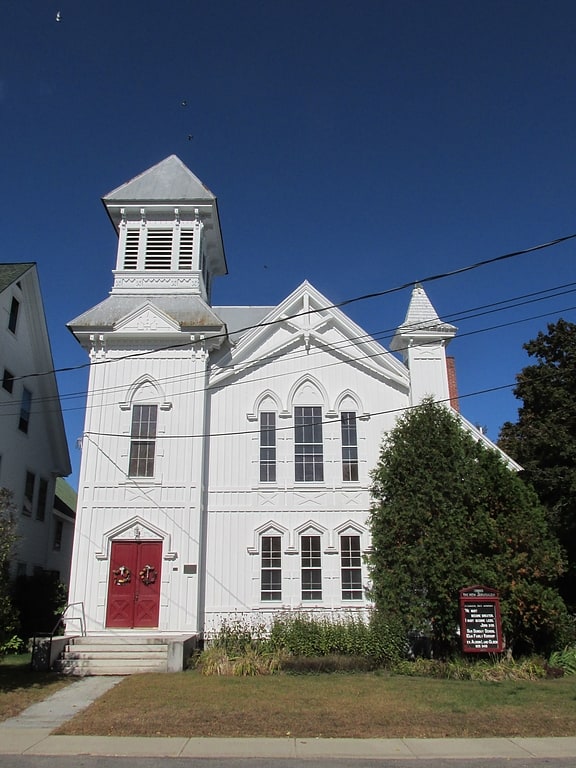
Church in Fryeburg, Maine. The Church of the New Jerusalem, now known as The Fryeburg New Church, is a congregation of The New Church at 12 Oxford Street in Fryeburg, Maine. The historic church building is a Stick style structure designed by Portland architect, Charles H. Kimball, and built in 1878. It was listed on the National Register of Historic Places in 1986.[1]
Address: 4 Oxford St, Fryeburg
Fryeburg Public Library
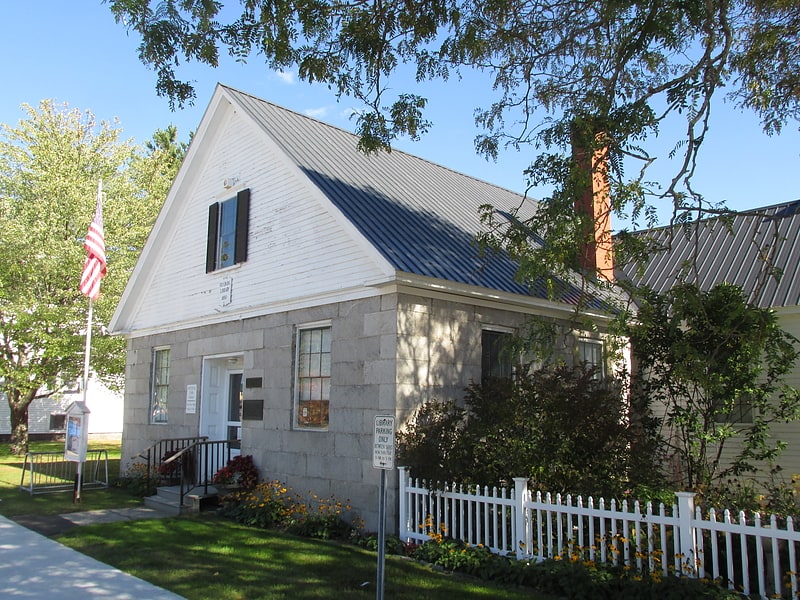
Public library in Fryeburg, Maine. The Public Library of Fryeburg, Maine is located at 515 Main Street. The library is located in a stone building, which was built in 1832 as the District No. 1 Schoolhouse, and is one of only two known 19th-century stone schoolhouses in the state. It was listed on the National Register of Historic Places in 1984.[2]
Barrows-Steadman Homestead
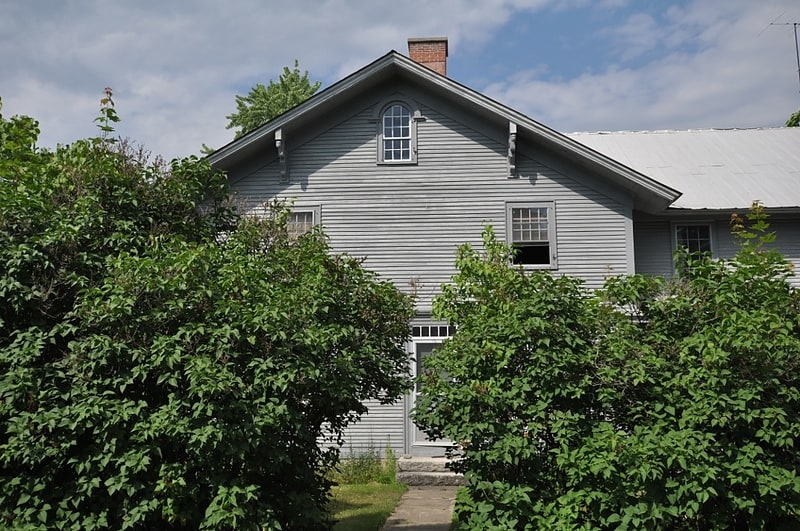
The Barrows-Steadman Homestead is a historic house at the northeast corner of Main and Stuart Streets in Fryeburg, Maine, United States. Built c. 1809, this frame house is a good vernacular example of Federal architecture, but is most notable for the murals painted on the walls of one of its bedrooms by Rufus Porter and Jonathan Poor, noted itinerant painters of the 19th century. The house was listed on the National Register of Historic Places in 1982.[3]
Fryeburg Registry of Deeds
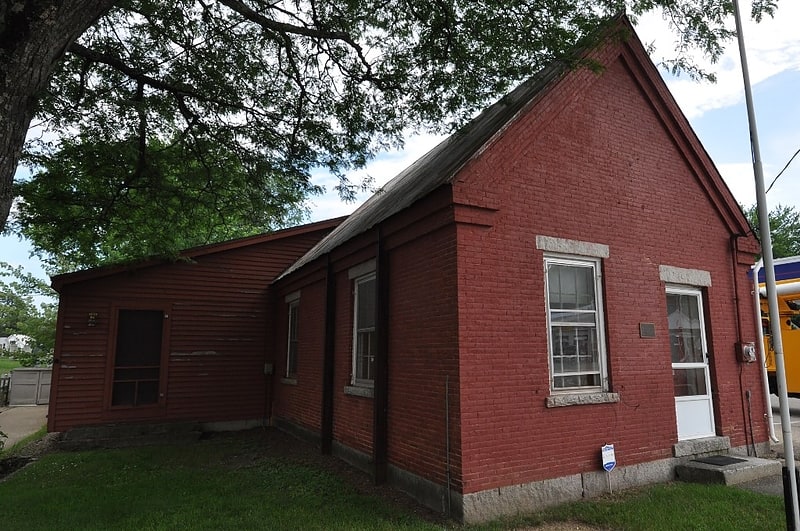
State government office in Fryeburg, Maine. The Fryeburg Registry of Deeds is a historic former government building on Main Street in Fryeburg, Maine. Built in the early 18th century, it was the only building of the Oxford County government in the western part of the county, and a rare regional example of Greek Revival styling executed in brick. It was listed on the National Register of Historic Places in 1987.[4]
Osgood Family House
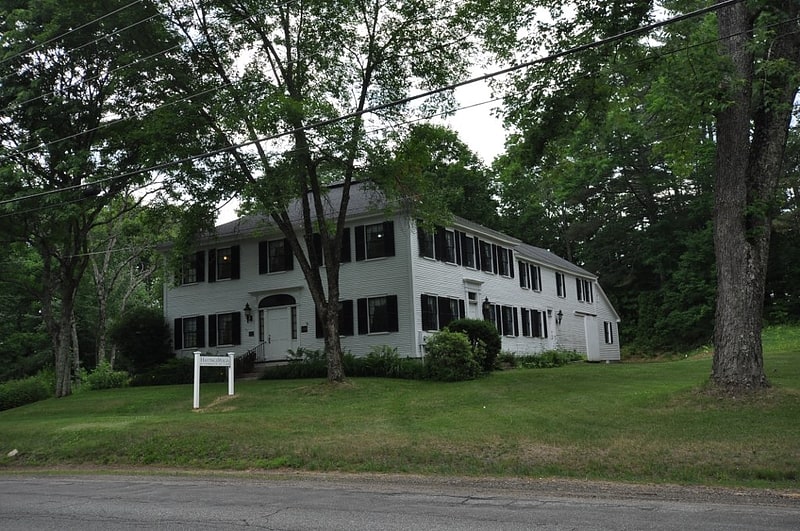
The Osgood Family House is a historic house on Main Street in Fryeburg, Maine. Built c. 1810, this two-story structure is one of the town's least-altered and best-preserved Federal style houses. It was probably built by Henry Young Brown Osgood, and remained in the Osgood family until 1940. It was listed on the National Register of Historic Places in 1990. It presently houses a law office.[5]
Squire Chase House
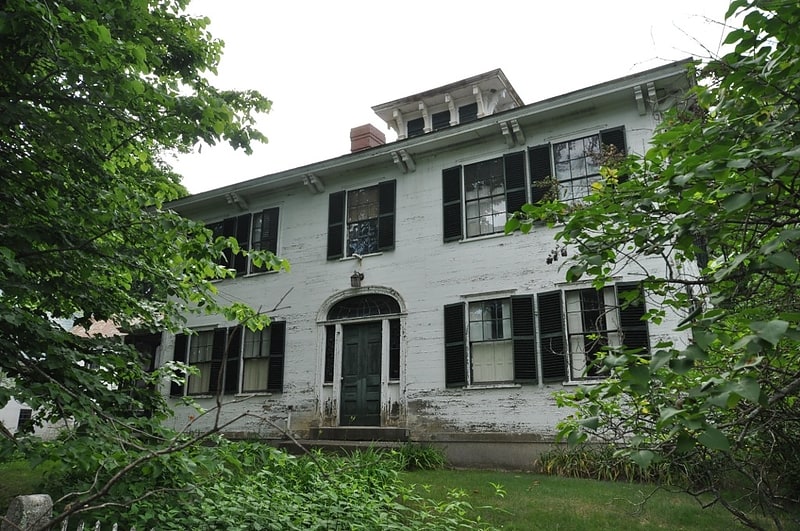
The Squire Chase House is a historic house on Main Street in Fryeburg, Maine. The oldest portion of this house, now a portion of the elongated ell attached to the main block, was built c. 1767 by Nathaniel Merrill, one of the early settlers of Fryeburg after its land was granted to Joseph Frye in 1762. It was sold in 1799 to James Osgood, the son of another early settler. Stephen and Mary Chase inherited this property in 1824, and moved the main block of the house across the street to its present location, and attached the older house to it. The exterior of this house was Federal in styling, although its interior is now Greek Revival in character.
The property was acquired in 1854 by David R. Hastings, who extended the main block's eaves, adding the brackets and cupola of the then-fashionable Italianate style. In 1908 the house was purchased Hattie Pike, a descendant of James Osgood, and was reported in 1979 to still be in the Pike family.
The main block of the house connected via the ell to a 19th-century barn. A single-story porch extends across the south side of the house, and another extends across much of the eastern face of the ell.
The house was listed on the National Register of Historic Places in 1979. It is located on the northwest side of Main Street, just south of its junction with Bridgton Road, and opposite part of the campus of the Fryeburg Academy.[6]
Marion Parsons House

Historical landmark in Fryeburg, Maine. The Marion Parsons House is a historic house at 179 Main Street in Fryeburg, Maine. It is located on the southeast side of Main Street, opposite River Street and two doors west of Elm Street. The main block of the house, built c. 1838 by a tailor named Robert Tonge, is a modest 1+1⁄2-story Cape style wood-frame structure with a gable roof. The exterior is finished in clapboards, with chimneys at either end. It is five bays wide, with a recessed center entry that is framed by sidelights and a molded architrave. A 1+1⁄2-story ell, an 1870s replacement for an earlier one, extends to the rear of the main block. This ell is attached to a 1+1⁄2-story barn which has Greek Revival styling.
The house is most significant for its association with Marion Parsons (1876-1968), a pioneering nurse and nursing educator active in the early 20th century. Miss Parsons had a distinguished career, first as a nurse in hospitals in Boston and San Francisco, and was for two years a nursing instructor at New York City Hospital. During World War I she volunteered her services to the military, serving several tours of duty at military medical facilities in France. In 1919 she was dispatched by the American Red Cross to Czechoslovakia, where she established a nurse's training school. She is one of a small number of women to receive the Czech Order of the White Lion. She was also decorated with the British Royal Red Cross for her World War I service. She returned to a teaching position in Boston, and retired in 1940 to this house, which she had purchased in 1937; it was her only permanent home.
The house was listed on the National Register of Historic Places in 1987.[7]